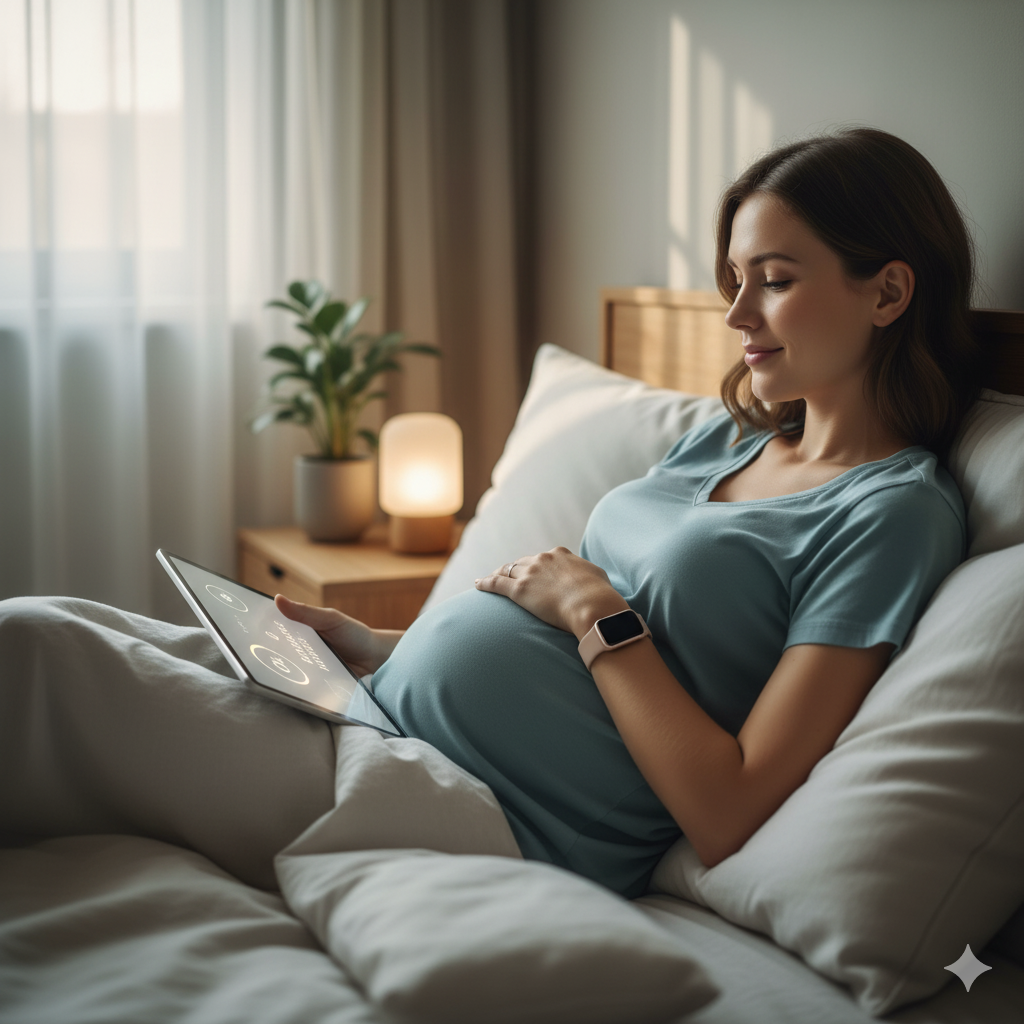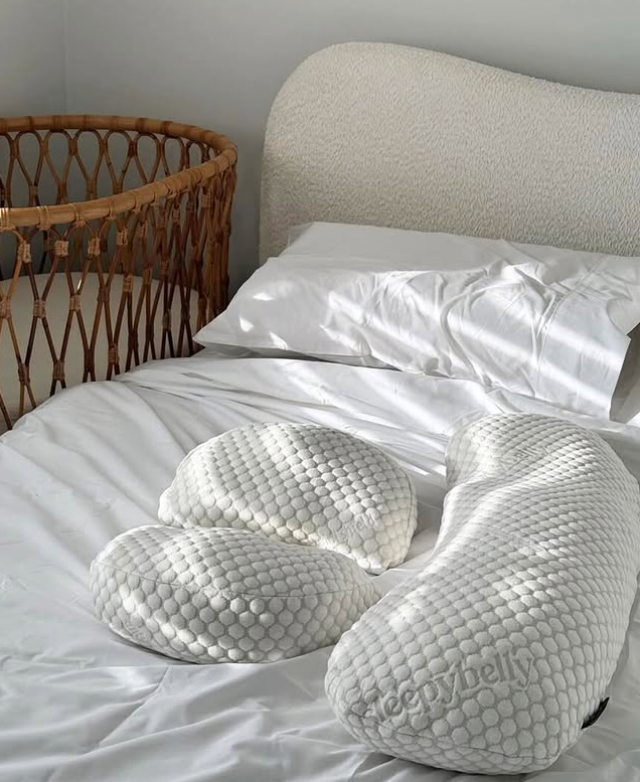You’ve heard them all—“Peppermint tea will make you pee,” “Naps will ruin your night,” “Pregnancy insomnia is just part of the deal.” But when you’re growing a tiny human, sleep myths can add stress to an already changing body. Let’s clear the fog and get the facts on pregnancy sleep so you can sleep safely, soundly, and with confidence.
Why Debunking Pregnancy Sleep Myths Matters
Believing old wives’ tales can leave you tossing and turning when you least need it. Getting accurate information on sleep positions, routines, and remedies helps you:
-
Support healthy blood flow to your bub and placenta.
-
Reduce aches, heartburn, and swelling.
-
Improve mood, energy, and overall wellbeing.
-
Make informed choices—rather than endless guessing—about products like maternity pillows, pyjamas, and creams.
The Australian Breastfeeding Association stress that good sleep is vital for both mother and baby. Let’s tackle the top myths so you can rest easy.
Myth 1: “You Must Sleep on Your Left Side at All Times”
Reality: Side-lying is safest after 16 weeks and recommended after 28 weeks, but strict “always left” rules aren’t necessary.
-
The left side does maximise blood flow to the placenta and help kidneys eliminate waste, easing swelling (RANZCOG).
-
Occasional right-side sleep is fine—alternating sides can prevent stiffness and muscle soreness.
-
If you wake on your back, simply roll gently back to either side rather than fighting to stay perfectly left.
Pro tip: Use a multi-piece support like the Sleepybelly Pregnancy Pillow to cradle your bump and stop you rolling onto your back.
Myth 2: “Daytime Naps Will Ruin Your Night’s Sleep”
Reality: Short, strategic naps can boost overall rest—if done right.
-
Keep naps to 20–30 minutes to avoid deep-sleep inertia.
-
Aim for early-afternoon naps (between 1 pm and 3 pm) so evening sleep isn’t disrupted.
-
If insomnia has you dragging through the day, a brief nap can improve alertness and mood.
For more on balancing naps and night sleep, resources like The Bump’s Pregnancy offer trimester-by-trimester advice.
Myth 3: “Pregnancy Insomnia Is Unavoidable”
Reality: While common, insomnia can often be eased with simple changes.
Factors contributing to insomnia include:
-
Hormonal shifts: Rising progesterone can disrupt your sleep–wake cycle.
-
Physical discomfort: A growing uterus, back pain or restless leg syndrome can wake you.
-
Anxiety and stress: Worries about labour or life changes keep your mind racing.
Effective strategies:
-
Bedtime routine: Unplug screens an hour before bed and try prenatal yoga or guided meditation.
-
Comfortable attire: Wear breathable pyjamas like Sleepybelly’s 3-Piece Maternity Pyjama Set, crafted from a bamboo-cotton blend that keeps you cool.
-
Topical magnesium: A nightly massage with Sleepybelly Magnesium Body Cream can soothe muscles and signal your body it’s time to rest.
According to the Sleep Health Foundation, combining behavioural tweaks with environmental adjustments can dramatically improve sleep quality.
Myth 4: “You Can’t Manage Heartburn or Indigestion at Night”
Reality: Diet and positioning go a long way to reduce reflux.
-
Avoid trigger foods (spicy, fatty or acidic foods) and caffeine after mid-afternoon.
-
Elevate your head and shoulders using a wedge pillow or by propping extra cushions behind your back.
-
Semi-reclined side-lying (about 30° incline) helps keep stomach acid in check—endorsed by the Australian Physiotherapy Association.
Bonus: Combining elevation with side-lying minimises reflux while you maintain a safe sleep position.
Myth 5: “Pregnancy Pillows Are Just a Luxury”
Reality: The right pillow is a pregnancy must-have, not an optional extra.
-
Proper support keeps your spine aligned, eases hip and back pain, and stops you rolling onto your back.
-
A versatile design transitions into a breastfeeding pillow postpartum—maximising its value.
-
Expecting mothers rave about reduced aches and deeper sleep when they upgrade to a purpose-built pillow.
Insider tip: Look for an adjustable, multi-piece pillow system—like Sleepybelly’s—so you can customise support from first trimester to feeding months.
Planning for Better Pregnancy Sleep
Getting ahead of sleep challenges means setting up your bedroom and routine for success. Here’s your pregnancy sleep toolkit:
• Pregnancy Pillow
– Invest in a supportive, adaptable design: Sleepybelly Pregnancy Pillow.
• Comfortable Bedding & Pyjamas
– Choose breathable bamboo or cotton sheets and the Sleepybelly 3-Piece Maternity Pyjama Set.
• Room Environment
– Blackout curtains to block early morning light.
– White-noise machine or app to mask household sounds.
– Temperature set between 18–20 °C for optimal comfort.
• Consistent Sleep Routine
-
Unwind with a warm (not hot) bath or magnesium-salt soak.
-
Practise five minutes of deep-breathing or guided meditation (apps like Smiling Mind, endorsed by Beyond Blue, can help).
-
Avoid screens—swap them for a light book or soothing podcast.
• Dietary Considerations
– Reduce fluids one to two hours before bed to minimise night-time bathroom trips.
– Opt for a light snack rich in magnesium (nuts, seeds, leafy greens) if you’re peckish.
Planning these elements in advance means you’ll have everything you need at your fingertips when insomnia threatens.
Things to Look Out For: When to Seek Professional Help
Most sleep hiccups are normal, but persistent or severe issues deserve attention:
-
Frequent dizziness or faintness when changing positions.
-
Severe back, hip or pelvic pain that limits movement.
-
Unrelenting swelling or tingling in hands and feet.
-
Heartburn that doesn’t improve with lifestyle tweaks or OTC remedies.
-
Sleep-disordered breathing—loud snoring, gasping or choking (Sleep Health Foundation).
-
Restless Leg Syndrome—limb discomfort and uncontrollable urges to move (seek a pelvic-health physiotherapist
If any of these sound familiar, reach out to your midwife, GP or obstetrician. Early intervention keeps both you and your bub safe and comfortable.
Final Thoughts: Sleep Smarter, Not Harder
Sleep during pregnancy doesn’t have to be a battle. By busting common myths, planning ahead and using supportive products—like the Sleepybelly Pregnancy Pillow, Maternity Pyjamas and Magnesium Body Cream—you’re well on your way to more restful nights.
Remember, every pregnancy is unique. Listen to your body, tweak your routine, and don’t hesitate to seek professional advice when you need it. Here’s to fact-based, myth-free sleep for you and your growing family!



